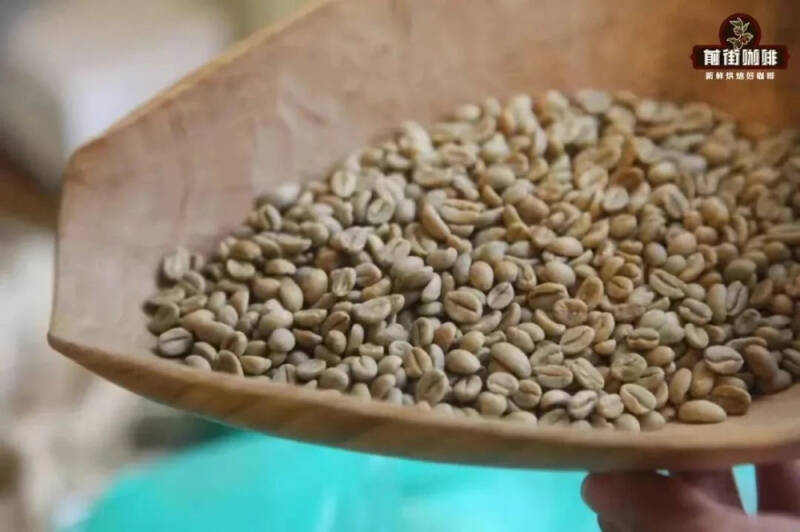How to judge the handling of coffee beans with your eyes? What is the difference between sun treatment and washing treatment? What are the characteristics of honey treatment?
The Coffee Identification Book 2.0 is coming! Two months ago, the street shared "how to identify the varieties of coffee beans by their appearance", which was well received by the majority of friends. However, it is obvious that knowing the identification of beans can not satisfy the curiosity of friends. After all, some people can tell the way of handling beans at a glance. It doesn't matter, you don't have to envy others from today! Because what Qianjie wants to share today is "how to judge the handling of beans at a glance"!

The first thing we know is the difference between tanning and washing, because they are the two most widely used treatments in the world! And, most of the treatment is derived from the sun and water washing! For example, such as the later more complex anaerobic fermentation treatment, its essence is to increase the link of anaerobic fermentation on the basis of sun washing!

By the way, there is also a relatively special regional treatment method-"honey treatment" in Central America, which is due to the fact that the local treatment conditions for insolation or water washing are not complete. The treatment method developed according to local conditions (in fact, washing treatment is also developed because of the inability to use sun treatment! ) ~ so next, let's have a brief understanding of the processing flow ~
Treatment process "Solar treatment": solarization is one of the earliest treatment methods, the harvested coffee fruit will be selected first, and then the selected ripe fruit will be dried in the sun, which needs to be turned constantly during the drying period. so that the fruit can be dried more evenly. Generally, the drying time will be 3 to 4 weeks. When the fruit shell is hard and dark red and black, it means that the moisture content of raw coffee beans is in the range of 10% to 13%. At this time, the peeling tool will be used to remove the shell.
"washing treatment": in the same washing treatment, the ripe fruit is selected after the coffee fruit is harvested, and then the ripe fruit is put into the machine to remove the peel and pulp first. the beans that finish peeling and pulp will contain some pectin mucus.
When the shelling work is finished, the beans with pectin mucus will be put into a clean water source for fermentation and stand for 12 to 36 hours. During this time, rich microbes will be produced in the fermentation tank to decompose the pectin mucus! After the fermentation is completed, wash with a lot of clean water, and finally dry the coffee beans until the moisture content of the beans is in the range of 10-13%.
"Honey treatment": after the coffee fruit is harvested, the ripe fruit is selected, and then the peel and pulp are removed by machine, and different degrees of pectin are retained according to different honey treatments. White honey retains 30%; yellow honey retains 40% 60%; red honey retains 70% 80%, black honey retains all! Then they are dried in the sun, so that the substances in the pectin can be absorbed by raw beans, and the drying time will vary with the retention of the pectin, and finally dry to 10%-13% moisture content.
Appearance and taste of different processed raw beans "sun-treated raw beans": sun-treated raw beans show a yellowish green color, with a complete film (silver skin), giving off a slight sense of fermentation, sweet berries and a hint of grass. "washed raw beans": the appearance color of washed raw beans is turquoise. There will be an incomplete film (silver skin) on the outside, mainly with the smell of grass and a hint of citrus fruit. "Honey-treated raw beans": the appearance color of honey-treated raw beans is uneven, because the retention of gum is different, the color changes differently. the more pectin is retained, the darker the color is. The appearance will have a more complete film (silver skin), in the taste, the more pectin content, the more obvious the fermentation flavor, also with a hint of grass and berry sweetness.
The reason why the processing and identification of cooked beans should first be mentioned in the front street is that they are closely related to the appearance of cooked beans! "tanning cooked beans": because the sun treatment can retain the silver skin more intact, so in the baking process, the silver skin can fall off completely, when the baking is finished, we can see that there is no silver skin in the seams of most coffee beans, that is, there is no white line, or the color of the white line is lighter!
"Water-washed cooked beans": water-washing treatment because the silver skin is not complete enough, so in the baking process, it will not fall off as a whole piece of sun-treated beans. But a small piece, a small piece of falling off, when the baking is over, we can see that there will be a white line in the middle of almost all the beans, that is the white line formed by the residual silver skin! Whether the white line is retained or not is the best way to distinguish between sun exposure and washing.
"Honey-treated cooked beans": honey-treated raw coffee beans are also relatively intact, so when baked, we will rarely see white lines in the seams of beans. In terms of color, you will see that different shades are its main characteristics. When raw beans are treated, the more pectin is retained, the darker the color will be after baking.
"anaerobic cooked beans": as mentioned earlier, anaerobic beans add steps on the basis of sun and water washing. These beans are usually the same as honey-treated beans, because each bean absorbs different degrees of substances. after baking, there are different shades of color. Therefore, when a bean has different colors, it may be either honey-treated or anaerobic-treated beans. But it is also easy to distinguish, most of the anaerobic beans will have a more obvious sense of fruit fermentation, from the sense of smell, we can distinguish them from honey treatment, and then according to the retention of the white line or not to determine the anaerobic sun or anaerobic washing.
(no prize contest: which of the above is anaerobic washing and which is anaerobic solarization?)
-END-
Front Street Cafe
No. 10 Baoqian street, Yandun road, Dongshankou, Yuexiu district, Guangzhou, Guangdong province
Important Notice :
前街咖啡 FrontStreet Coffee has moved to new addredd:
FrontStreet Coffee Address: 315,Donghua East Road,GuangZhou
Tel:020 38364473
- Prev

What is the harm of grinding coffee beans instead of powder? Does it have an effect on the extraction and brewing of espresso?
Sellers of coffee beans generally have a grinding service, including Qianjie! However, if this packet of coffee beans is used for Italian extraction, Qianjie does not recommend guests to choose the service of grinding powder! I believe that this is easy to cause confusion among most friends: it just "stale" faster, as long as I drink fast and taste.
- Next

As global coffee prices continue to rise, India's coffee exports will soar
Recently, as commercial ships in the Red Sea area continue to be attacked by Houthi forces, maritime commercial ships have no choice but to stop operation or make a detour. This approach has led to a significant increase in shipping costs and time, especially coffee beans. According to reports, the futures price of robusta coffee on ICE is the highest in nearly 16 years.
Related
- Customers have "changed" Manner's new products! Shop assistant: Please don't mess around!
- Remove sockets in customer areas at Starbucks stores?! Netizen: I won't go if I really tear it down
- What is the difference between the taste steps of sun-dried coffee and washed coffee? Why is sun-cured coffee sweeter and washed coffee sour?
- The recipe for salty grapefruit dirty is revealed! Coffee Festival salty grapefruit dirty coffee making materials parameters ratio milk share!
- How about the flavor of Sunlight 74158 at Sidamo Banshaha Mathieu Processing Factory in Ethiopia? 74158 Share the proportion of coffee brewing parameters!
- What effect does Italian American coffee with filter paper have? Will coffee taste better if it is put on filter paper at the bottom of the powder bowl?
- What is the color difference in coffee beans? What are the characteristics of honey processed coffee beans? Why are the anaerobically treated coffee beans uneven in color?
- How does novice Xiaobai quickly get started and make coffee? Newbies learn to make coffee by hand and share the specific steps and process process!
- Costa tea has a shelf life of 100 years?! Expert: Unable to verify
- It's a huge uproar! American milk addition was rejected by Manner employees?!

